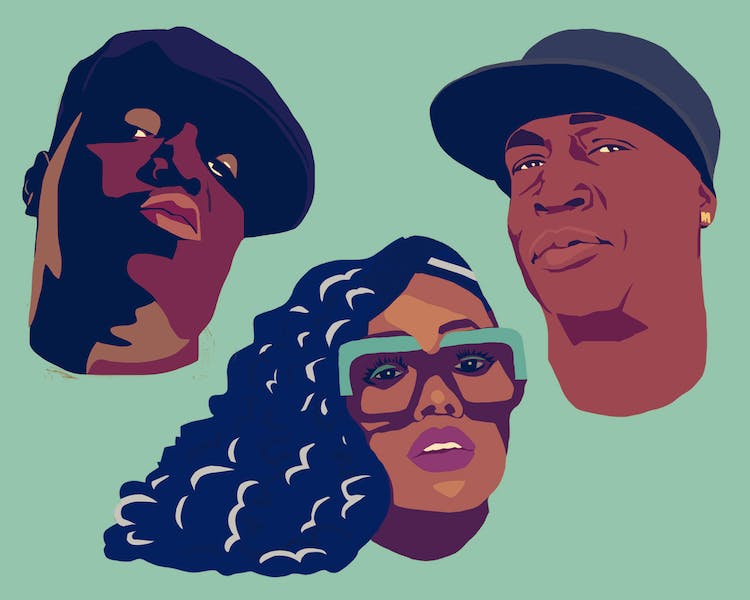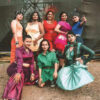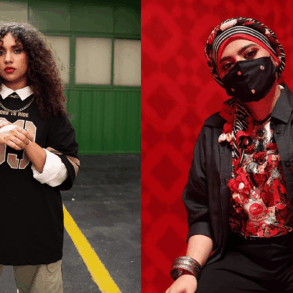
Hip-hop is arguably one of the most popular music genres currently in the mainstream, with artists like Nicki Minaj, Kendrick Lamar and countless others dominating the charts. With deep cultural roots spanning all the way back to West Africa, the genre has a dominating presence throughout the world for its eclectic sound.
The genre planted its roots in West Africa during the 18th and 19th centuries, creating many key foundations of hip-hop music, such as lyrical storytelling. Known as the “griot” tradition, musicians during this time began to use their lyrics to tell a story through weaving in local settings and rhyming verses. Now, this is heavily used throughout many rap songs, most notably in albums like Lamar’s “To Pimp A Butterfly.”
After remaining in the background of most West African music, the genre migrated over to other countries like the U.S. in the 20th century, gaining prominence in the late 1970s. Spawning a subculture in The Bronx of New York City, hip-hop artists were a reflection of the time period, which was plagued by post-industrial decline, racial injustice, political tension and a changing economy.
The changing landscape of the 1970s caused many minorities to migrate into new suburbs in New York City, which would come into play later with rappers from countries like Puerto Rico and the Caribbean. As a result of the negative experiences minorities were facing, young people started hosting block parties to allow for self-expression, laying the groundwork for DJs.
DJs and MCs, otherwise known as rappers, would come to these block parties, setting up “sound systems,” which were groups of DJs who would play ska, rock steady or reggae music. Due to influences from Jamaica, attendees also brought cardboard to dance on, thus sparking the breakdancing movement. People also introduced graffiti into the art scene of the time as well, becoming a major symbol of hip-hop culture.
Instead of lashing out with anger, musicians channeled feelings into their music, releasing the tension with songs that were celebratory, creative and fun to sing and dance to. Notable pioneers of the DJ movement were DJ Kool Herc, Afrika Bambaataa and Grandmaster Flash, known now as the “Holy Trinity” of hip-hop.
Herc was a Jamaican immigrant, becoming popular for his event, the 1973 “Back to School Jam,” which was held in a recreation room of his Bronx apartment. Responsible for launching the hip-hop movement, Herc became a legend in the genre, inventing the “breakbeat” DJ technique. The technique was a mixing practice he adapted from Jamaican dub music, using a pair of turntables to play two copies of the same song and then switch between them to extend its percussive section.
Breakbeats also allowed for breakdancing to emerge. This caused some people to label themselves as B-Boys and B-Girls, short for Break Boys and Break Girls. Meanwhile, Bambaataa was a major figure in helping hip-hop break free of its stereotypes. Starting the Universal Zulu Nation, a music-oriented organization that encouraged peace and unity through the expression of hip-hop culture, he helped introduce youth to DJing, breakdancing, rapping and visual art.
In 1982, Bambaataa and The Soul Sonic Force dropped one of the most influential hip-hop songs in the early days of the genre, titled “Planet Rock.” Resorting to electronic sounds instead of funk beats, the song helped popularize the TR-808, becoming a staple of hip-hop.
Grandmaster Flash grew to prominence in his home suburb of The Bronx, being the first DJ to manipulate records in a backward, forward and counterclockwise motion. He invented techniques like the backspin, cutting, punch phrasing and scratching, which practically all DJs use now. He also created a group called Grandmaster Flash and the Furious Five in 1976, which is one of the most influential hip-hop groups of all time.
The 1980s saw more technological advances in the genre, but the 1990s saw hip-hop fully emerge into the mainstream, known now as “the golden age of hip-hop.” Record labels started investing more money in the genre, and the genre saw a shift into using sampled music and deeper lyrical subject matter.
Artists of this time like Run-D.M.C, L.L. Cool J, Public Enemy and the Beastie Boys became iconic for their outspoken voices, addressing subjects like police brutality, racial injustice and class conflicts. They also ignited the importance of fashion in hip-hop, adding new language about it into their music.
Throughout the 2000s and 2010s, hip-hop continued to take form, launching artists overnight. In particular, female rap has become heavily prominent, with artists like Nicki Minaj, Megan Thee Stallion, Ice Spice and Cardi B all following in the footsteps of others before them like Queen Latifah and Missy Elliot.
Overall, hip-hop is a genre that will simply never go out of style, especially due to the roots it has throughout the entire world.
This post was originally published on this site be sure to check out more of their content.






